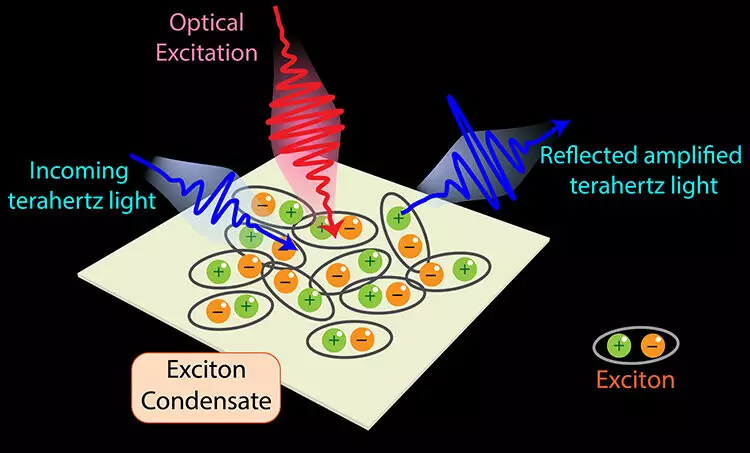Scientists are constantly seeking ways to uncover the hidden properties of various materials. Just as a flashlight helps us see in the dark, researchers at the University of California San Diego have discovered that light can be used to reveal the desirable properties of a quantum material called Ta2NiSe5 (TNS). By using an advanced optical technique, these scientists have made significant strides in understanding the behavior of this material. Their work, published in Nature Materials, sheds light on the potential applications of light in the study of materials.
Shedding Light on Quantum Materials
Traditional methods of perturbing materials, such as changes in temperature or pressure, often yield valuable insights. However, the speed at which materials respond to light makes it an incredibly powerful tool in the study of their properties. Professor of Physics Richard Averitt, the lead researcher of the study, explains that light can be used as a stop-action photography tool. By incrementally following the movement of particles within a material, scientists can uncover properties that would otherwise remain hidden. This novel approach has the potential to revolutionize the field of material science.
The Experiment and Breakthroughs
The experiment was conducted by Sheikh Rubaiat Ul Haque, a postdoctoral scholar at Stanford University and a graduate of UC San Diego. Haque, along with another graduate student Yuan Zhang, made significant improvements to a technique called terahertz time-domain spectroscopy. This enhancement allowed them to measure TNS properties over a broader range of frequencies, thus expanding their understanding of the material. The theoretical framework for this research was established by Eugene Demler, a professor at ETH Zürich, and his graduate student Marios Michael. They proposed that certain quantum materials, when excited by light, could transform into a medium that amplifies terahertz frequency light. Intrigued by this idea, Haque and his team delved deeper into the optical properties of TNS.
During the experiment, the team observed that when an electron is excited by a photon to a higher energy level, it leaves behind a hole. When the electron and hole remain bound together, an exciton is created. Excitons have the fascinating ability to form condensates, which occur when particles come together and behave as a single entity. The researchers used Haque’s improved technique, along with density functional calculations by Angel Rubio’s group at the Max Planck Institute for the Structure and Dynamics of Matter, to observe terahertz light amplification in the TNS exciton condensate. This breakthrough allowed them to uncover some of the hidden properties of the material.
This groundbreaking research has significant implications for the emerging field of entangled light sources, where multiple light sources have interconnected properties. By imprinting quantum properties onto light, researchers believe that quantum materials could be utilized to create these entangled light sources. Haque is optimistic about the potential applications of Demler’s theory, stating that it can be applied to a multitude of other materials with nonlinear optical properties. The field of material science is now more open than ever, with endless possibilities waiting to be explored.
The use of light as a tool to uncover the hidden properties of quantum materials has proven to be incredibly promising. Through the innovative use of an advanced optical technique, scientists at the University of California San Diego have made significant strides in understanding the behavior of Ta2NiSe5 (TNS). With their enhanced understanding of TNS and the potential applications of light in material science, researchers are now equipped to delve deeper into the exciting field of quantum materials. The discoveries made in this study pave the way for further exploration and innovation, as scientists continue to harness the power of light to unravel the mysteries of the material world.


Leave a Reply